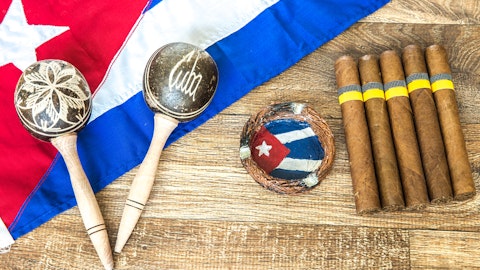These most profitable organic crops in America may provide an answer how to make organic farming more desirable for traditional farmers. Any of these high-profit cash crops are great small farm income ideas.
Organic farming is an idea that sounds great on paper, but in reality, there are still few kinks that need to be ironed out. It is widely known that organic farming isn’t most profitable farming per acre, but it has also yet to prove its most advertised quality, that it is better for the environment than the traditional farming. Some people will have a fit after reading this statement, but hear me out first before bringing out torches and pitchforks.

Dasha Petrenko/Shutterstock.com
Dr. Steven Savage, a renowned food and agriculture expert, has published an analysis of survey performed by The United States Department of Agriculture (USDA) in 2014, which takes a deeper look into organic food production in America. The conclusions Dr. Savage reached prove beyond doubt that organic farming has a long way to go before it can compete with traditional farming in terms of productivity.
One of the most astonishing facts is that, under current circumstances, in order for the entire US farm production to be organic, it would require 109 million acres of additional farmlands. To put that number into perspective, all national parks in America take up 52.2 million acres, so we would need twice that and then some more. And here lies the crux of the problem. Organic farming may be better for the environment on acre per acre comparison, but if you throw additional 100 million acres into the equation and all the accompanying effects that go with such (croplands in 2012 occupied some 389.7 million acres), that advantages soon melts away. Organic farming simply isn’t productive enough (yet) to be a viable option for a large-scale transition.
Out of 370 compared crops, which represent about 80% of US croplands, in just 55 cases, or 9%, organic farming yielded higher production. In 7% the production was equal and in the remaining 84%, traditional farming yielded far higher results. For the most part, higher yields for organic production were reserved for crops that are mostly planted in the West. This is significant because the desert climate in the western regions reduces the risks of diseases and pests other farming regions in the country with wetter climate suffer from, thus allowing for less pesticide and herbicide use. His analysis indicates that there is still a significant yield gap between organic and traditional farming which needs to be addressed.
With all that being said, the current state of affairs in conventional farming is unsustainable and major changes must be made if humans are to have future on this planet. With global climate changes bringing new challenges almost daily, it would seem that large-scale factory farming does more harm than good and needs to be altered in a way that is far less harmful to the environment. Organic farming, in its currents state, doesn’t seem to be the answer we are looking for. Still, there are some crops that seem to benefit more than others from the organic approach and planting those can be profitable.
Before plunging yourself into organic farming, first you have to determine what kind of market you have at your disposal. Similar to choosing Most Profitable Gourmet Mushrooms to Grow, location is the key. This will determine the type of crop you will be able to successfully sell. Proximity to major urban centers will greatly improve your choices and allow you to sell your products without worrying how a long-distance transport will affect it.
Your local climate will also determine what kind of crop can you plant. Growing avocados in Montana doesn’t sound like a very profitable plan, so take your local conditions into account. If you have any organic farms in your area, driving to one and talking to farmers is usually the best way of obtaining all the information you need. Even traditional farmers can be very helpful in getting you started.
The next step is getting your farm certified. Getting a reliable certification agent will be a big help in guiding you through the process. The cost of getting USDA organic certificate will set you back about $750. There are several conditions you must meet before getting the certificate. The soil you plan on using must be at least three years free of all prohibited substances, like synthetic herbicides and pesticides. Once you get your certification, you will be subjected to the annual inspection by your agents, making sure you follow all the standards and procedures set down by the USDA.
In determining 15 most profitable organic crops in America, we looked at Dr. Savage’s analysis of the USDA 2008 survey of organic farming. In it, he compared relative income for all major organic crops in America, which we used as an indicator of how profitable each one of them is. These are the crops with the highest profit per acre.





